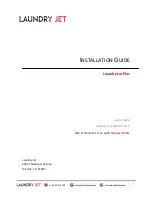
Maximum
performance level
Achieved
performance level
Abrasion resistance
class 6
class 6
Tear resistance
class 6
class 4
Tensile strength
class 6
class 5
Puncture resistance
class 6
class 3
Liquid repulsion
class 3
H2SO4 30% : class 3
NaOH 40% : class 3
Resistance to
penetration of liquids
class 3
H2SO4 30% : class 3
NaOH 40% : class 3
Seam strength
class 6
class 5
EN 471 : high visibility garments :
The combination of high quality fl uorescent fabric with retro-
refl ective tapes signals your presence as well during the day as at
night in the beam of a light source (e.g. the headlights of a car).
EN471 : high visibility warning clothing
X : class related to the surface of both
fl uorescent and retro-refl ective material (*)
Y : performance level of the retro-refl ective
material, in this case Y = 2 (2 being the highest
performance level)
(*) required surface :
class 3:
fl uorescent surface:
retro-refl ective surface:
min. 0,80m
2
min. 0,20m
2
class 2:
fl uorescent surface:
retro-refl ective surface:
min. 0,50m
2
min. 0,13m
2
class 1:
fl uorescent surface:
retro-refl ective surface:
min. 0,14m
2
min. 0,10m
2
Test op mannequin
The coverall has been tested on a manikin to determine the
behaviour of the clothing when subject to a fl ame engulfment. The
test was carried out by BTTG (at their Altrincham, UK laboratory)
on the RALPH manikin. The RALPH manikin test has been
developed to provide information on the fl ammability and heat
transfer performance of clothing systems when subjected to fl ame
envelopment such as might only reasonably be expected to occur
under ‘emergency’ conditions. It is essentially intended to compare
one clothing system with another, it does not purport to provide
information in terms of the ‘survivability’ of a given event.
A summary of the test report :
1. samples
n
a coverall, 50 times washes at 60°C by the manufacturer. The
size of the coverall is UK42 - EU52, suitable for a person with chest
: 102-108 cms; waist 86-90 cms and height 164-172 cms.
n
The coverall was tested in combination with the following new
undergarments :
o 100% cotton long sleeved t-shirt, size XL
o 100% cotton jeans trousers, size 36
- The clothing were considered to be a good fi t on the manikin.
2. Method of test
n
Testing was undertaken on the 2006 version of the ‘male’ heat
sensing manikin known as RALPH (Research Aim Longer Protection
against Heat) developed at BTTG Fire Technology Services. This
version of RALPH together with the associated test facility has
been built to comply with the international standard ISO 13506.
n
RALPH has a total of 135 sensors distributed over the head,
torso, legs, arms and hands which monitor the temperature on the
surface of the manikin during a test. (the feet of the manikin are not
sensored). For this test the sensors in the hands and interface area
were not used leaving 123 sensors being monitored.
n
From the temperatures recorded predictive percentage burn
injury at Pain, 1st, 2nd and 3rd degree levels are calculated using
the Takata and Stoll skin model as specifi ed in Annex C of ISO
13506.
n
During a test the manikin is challenged by a fl ame engulfment
apparatus consisting of 12 burners (in two tiers of six) surrounding
the manikin in a hexagonal pattern. The manikin is placed at the
centre of the hexagonal pattern. The lower set of six burners are
pointed at the legs and lower body of the manikin whilst the upper
set of six burners are pointed at the upper body and head.
n
The tests were performed under the following conditions :
o Mean heat fl ux : 84 kW/m² +/- 2,5% (i.e. 81,9 - 86,1 kW/m²)
o Flame exposure time : 4 seconds
o Data acquisition time : 60 seconds
3. Summary of results :
n
Observations during the test : there was no obvious ignition
of the coverall apart from 3-4 seconds of surface afterfl ame
immediately following the burners being switched off. There was no
‘break-open’ of the coverall during the test.
n
After test examination : the exposed areas of the coverall were
charred and weak in places. The t-shirt and jeans were stained but
otherwise undamaged.
n
Burn injury prediction : the results below are expressed according
to clause 9.5.3. of ISO 13506 which calculates the percentage burn
injury based on the total area of manikin covered by the garments
under test being 100%. For this test, therefore, the head is not
included in the calculations.
2013-09-23
6
60910-ROO_gebr_ HVFRACH-13_viertalig.indd 6
29-11-13 10:12

























